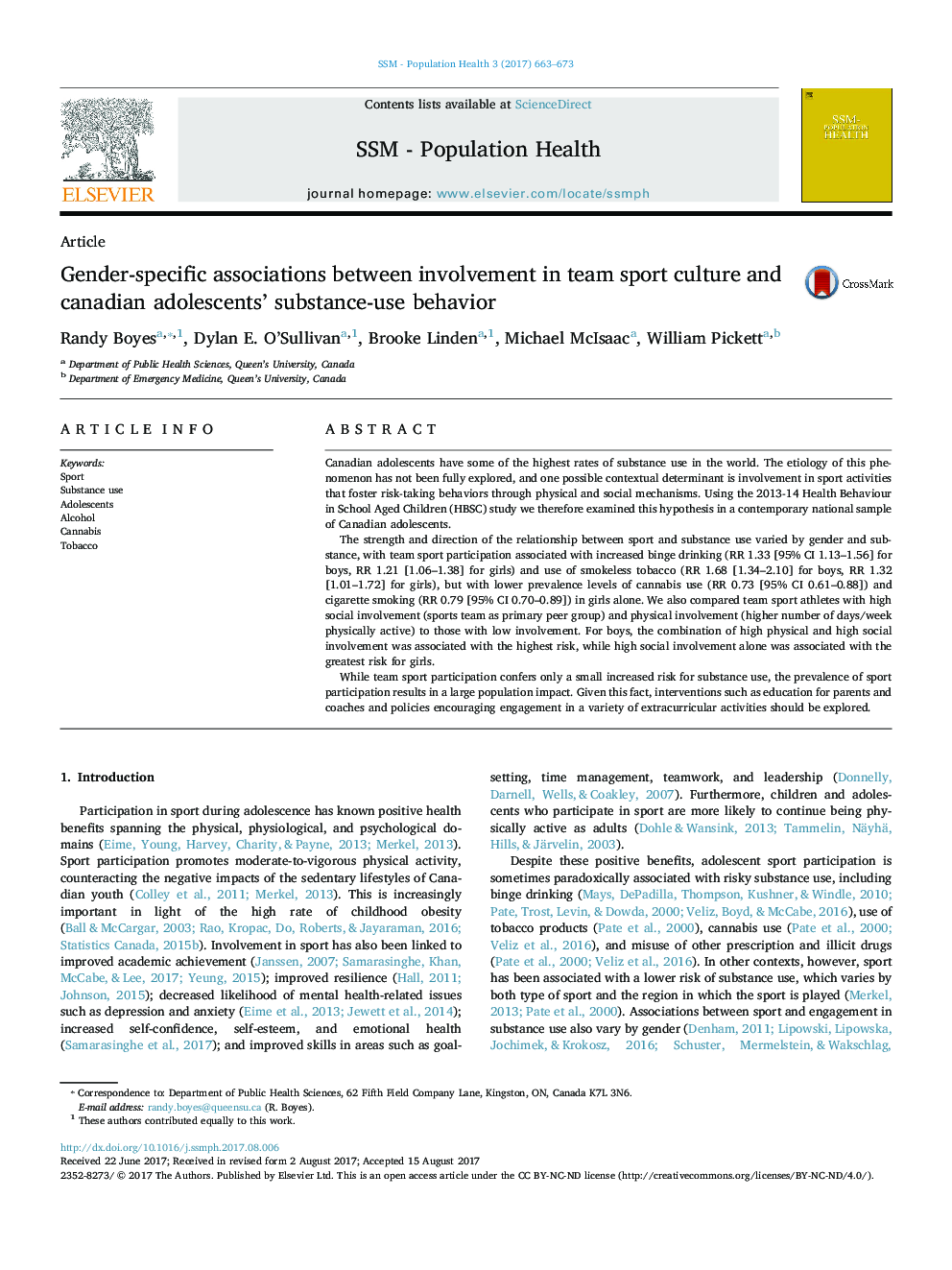| Article ID | Journal | Published Year | Pages | File Type |
|---|---|---|---|---|
| 5123300 | SSM - Population Health | 2017 | 11 Pages |
â¢Team sport is associated with increased binge drinking and smokeless tobacco use.â¢Team sport is associated with decreased cannabis use and smoking in girls only.â¢Girls with high social involvement in a casual team are at the highest risk.â¢Boys with high social involvement in a competitive team are at the highest risk.
Canadian adolescents have some of the highest rates of substance use in the world. The etiology of this phenomenon has not been fully explored, and one possible contextual determinant is involvement in sport activities that foster risk-taking behaviors through physical and social mechanisms. Using the 2013-14 Health Behaviour in School Aged Children (HBSC) study we therefore examined this hypothesis in a contemporary national sample of Canadian adolescents.The strength and direction of the relationship between sport and substance use varied by gender and substance, with team sport participation associated with increased binge drinking (RR 1.33 [95% CI 1.13-1.56] for boys, RR 1.21 [1.06-1.38] for girls) and use of smokeless tobacco (RR 1.68 [1.34-2.10] for boys, RR 1.32 [1.01-1.72] for girls), but with lower prevalence levels of cannabis use (RR 0.73 [95% CI 0.61-0.88]) and cigarette smoking (RR 0.79 [95% CI 0.70-0.89]) in girls alone. We also compared team sport athletes with high social involvement (sports team as primary peer group) and physical involvement (higher number of days/week physically active) to those with low involvement. For boys, the combination of high physical and high social involvement was associated with the highest risk, while high social involvement alone was associated with the greatest risk for girls.While team sport participation confers only a small increased risk for substance use, the prevalence of sport participation results in a large population impact. Given this fact, interventions such as education for parents and coaches and policies encouraging engagement in a variety of extracurricular activities should be explored.
